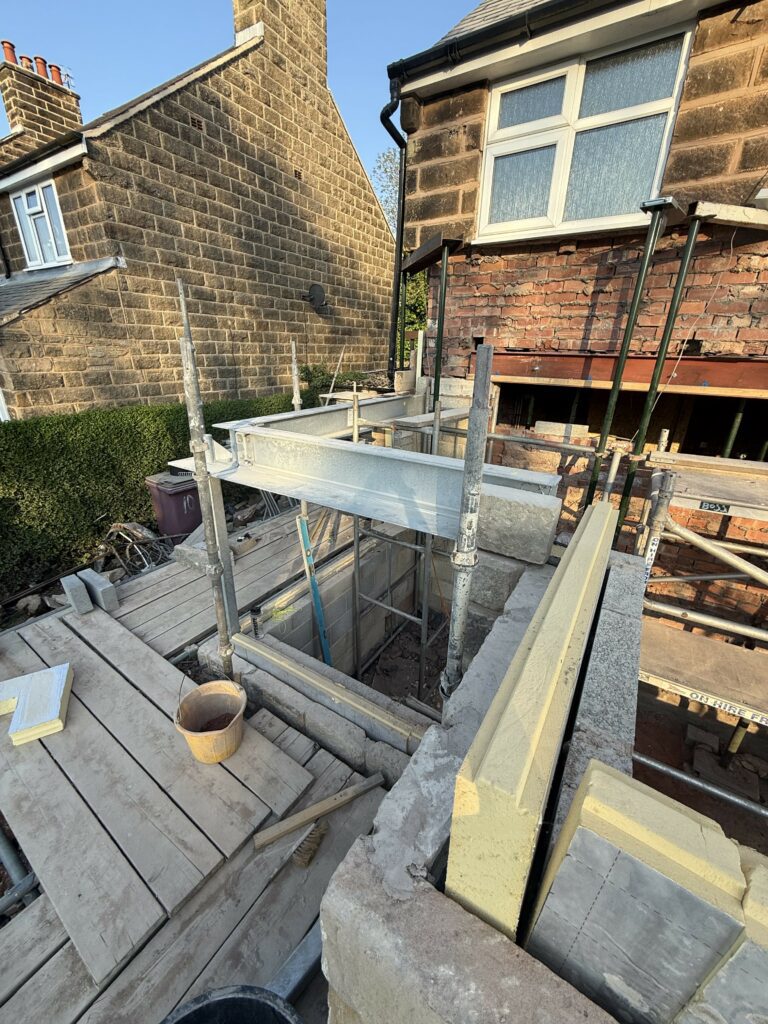
What is a Windpost?
In construction, windposts serve an essential purpose in providing stability. A windpost is a vertical steel structure usually spanning vertically between floors. Windposts are supplied as a complete kit to include the vertical stem, bottom connection, top connection and wall ties and sometimes come with a fixing pack.
The United Kingdom experienced record wind speeds of 122 miles per hour when Storm Eunice hit in early 2022.
We are no strangers to extreme winds in this part of the world. It is more important than ever to ensure stability when constructing homes and buildings. Experts believe that climate change will bring about more severe weather events in the years to come.
When it comes to construction, a windpost is a popular solution to provide extra stability to a wall.
Hundreds of years ago, our forefathers used heavy and oversized blocks of stone in their construction. A benefit of this is that it gave buildings added stability. Modern technology has made it quicker and easier to build houses.
But it has given us thinner masonry walls. This means we need extra support to ensure our homes last long and withstand extreme weather events and other structural issues.
But, what is a windpost, and do you need one? This article will teach you everything you need to know about windposts and their uses in construction.
What is the purpose of a Windpost?
There is never a wrong time to add an extension to your home or start that home improvement project you have always dreamt of. Whether you are looking for more space or hoping to upgrade your home, a construction project can be a significant learning curve.
Suppose you are doing a whole new building project, a major renovation that requires building walls, or a whole new floor. In this case, you may find, to your surprise, that your builder or architect is suggesting you install construction windposts.
Imagine you want to remove a wall between your kitchen and living room to create an open-plan kitchen. This may seem straightforward. However, in some specific cases, it can require structural additions such as a windpost to stabilise the build or to split a large panel of masonry.
In construction, windposts serve an essential purpose in providing stability. A windpost is a vertical steel structure usually spanning vertically from foundation to first floor, between floors, or from floor to roof. Windposts are supplied as a complete kit to include the vertical stem, bottom connection, top connection and wall ties and sometimes come with a fixing pack.
In the past, if you needed stability, you would have built columns or made your walls thicker. If you tried this today, it would make your construction project much more expensive.
In recent decades there have been innovations in the building industry to make your walls more robust and resistant to bad weather and other forces. Windposts are an excellent way to add structural stability to your wall or to reduce the overall size of a panel of masonry.
Windposts are made of stainless steel or mild steel and post galvanized. However, you can fix them to a variety of materials. They can attach to timber, steel, or brick structures.
A structural engineer or architect who analyses your building plans will be able to recommend the proper spacing and placement of your windposts for your project as well as the Type of Windpost and the section size you require.
How are Windposts supported?
If you want to stabilise your walls with windposts, you cannot just place the steel structure between the layers of brick. They need to have anchor points to provide the stability you need.
Windposts are often installed between the inner and outer leaf of a wall. However, you can also place them inside a cavity wall without disturbing the blockwork.
The windpost will often be bolted down into the foundation and supported between different floors. To do this, you will attach the windpost using a specific tie or connection. The type of tie you need will depend on the frame and the design.
These wall ties play a crucial role in reducing the lateral load from the wall. They also allow the structure to move without cracking.
Wall ties will also be placed between the bricks at several points as the wall is constructed. An engineer will calculate the intervals at which you need to tie it. When you buy windposts for construction, you will use special screws and bolts to attach to a steel beam, concrete, or timber structure.
When do you need Windposts?
If a structural engineer has said you need to install windposts, you might be wondering why they are even necessary.
As their name suggests, windposts provide valuable protection to a structure if it faces exposure to high winds, earthquakes, or hurricanes. But they also offer stability from pressures that the structure itself can create and reduce the overall panel of masonry.
If you have an extensive panel of bricks or a wall that is longer than a certain distance, you may need several windposts to stabilise the structure. Your engineer may also recommend windposts if your building has several floors.
A classic use of windposts is for bi-folding or concertina doors.
We all want as much light as possible to enter our homes. In modern design, it is popular to have a large door sliding open to give full access to a terrace or garden.
The downside is that when you have such a wide opening in the brickwork, you lose stability. Windposts will be necessary to add the support you need.
If you live in an area with a high risk of extreme winds or earthquakes, you will also need to add windposts to your construction. Even living by the seaside could increase your exposure to elements which weaken the stability of your building.
When are Windposts not necessary?
If you are building a small, one-storey home, you may not require windposts. The same applies if you are only constructing a small extension.
In a tiny building, there are fewer instances of large panels of masonry that will impact the stability. Wind load is more of a concern in tall buildings that use heavy materials.
If you do not have large openings for big windows or sliding doors, you do not have to worry about installing windposts unless otherwise advised by your structural engineer.
Visit our Windpost Superstore now to build and order online.




